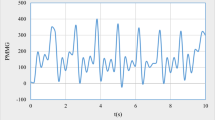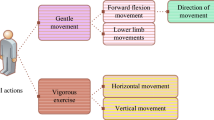Abstract
Optical tracking sensor technology has been widely used in the field of motion. However, there are still some challenges in the recognition of badminton players, and more accurate methods are needed to capture the dynamic characteristics of badminton players. The aim of this study is to design an optical tracking sensor system based on image feature extraction for badminton player motion recognition. In this paper, a high resolution camera is used to collect the image sequence of badminton match. Then through image processing and computer vision technology, the key image features are extracted from the image sequence. Then, machine learning algorithm is used to classify and recognize the extracted features to achieve accurate recognition of badminton players' movements. The experimental results show that the optical tracking sensor system can effectively extract the movement features of badminton players and identify their movements accurately. Compared with the traditional method, the system in this paper has higher precision and real-time performance, and can meet the needs of practical applications.









Similar content being viewed by others
Data Availability
The data will be available upon request.
References
Callow, N., Hardy, L., Hall, C.: The effects of a motivational general-mastery imagery intervention on the sport confidence of high-level badminton players. Res. Q. Exerc. Sport 72(4), 389–400 (2001)
Cheng, G., Han, J.: A survey on object detection in optical remote sensing images. ISPRS J. Photogramm. Remote Sens. 117, 11–28 (2016)
Chityala, R.N., Hoffmann, K.R., Bednarek, D.R., Rudin, S.: Region of interest (ROI) computed tomography. In: Medical Imaging 2004: Physics of Medical Imaging, vol. 5368, pp. 534–541. SPIE (2004)
Esteva, A., Chou, K., Yeung, S., Naik, N., Madani, A., Mottaghi, A., Liu, Y., Topol, E., Dean, J., Socher, R.: Deep learning-enabled medical computer vision. NPJ Digital Med. 4(1), 5–12 (2021)
Eswaraiah, R., Sreenivasa Reddy, E.: Robust medical image watermarking technique for accurate detection of tampers inside region of interest and recovering original region of interest. IET Image Proc. 9(8), 615–625 (2015)
Gao, R.Y.: A comparison between talent identification and development (TID) for badminton in China and the UK (2017)
Kato, S., Nakagawa, T., Ohkawa, M., Muramoto, K., Oyama, O., Watanabe, A., Nakashima, H., Nemoto, T., Sugitani, K.: A computer image processing system for quantification of zebrafish behavior. J. Neurosc. Methods 134(1), 1–7 (2004)
Kong, Y., Fu, Y.: Human action recognition and prediction: a survey. Int. J. Comput. Vision 130(5), 1366–1401 (2022)
Li, K., Wan, G., Cheng, G., Meng, L., Han, J.: Object detection in optical remote sensing images: A survey and a new benchmark. ISPRS J. Photogramm. Remote Sens. 159, 296–307 (2020)
Manrique, D.C., Gonzalez-Badillo, J.J.: Analysis of the characteristics of competitive badminton. Br. J. Sports Med. 37(1), 62–66 (2003)
Phomsoupha, M., Laffaye, G.: The science of badminton: game characteristics, anthropometry, physiology, visual fitness and biomechanics. Sports Med. 45, 473–495 (2015)
Voulodimos, A., Doulamis, N., Doulamis, A., Protopapadakis, E.: Deep learning for computer vision: a brief review. Comput. Intell. Neurosc. 7, 163–167 (2018)
Wang, N., Gao, X., Tao, D., Yang, H., Li, X.: Facial feature point detection: a comprehensive survey. Neurocomputing 275, 50–65 (2018)
Wang, J., Yu, L.C., Lai, K.R., Zhang, X. (2016). Dimensional sentiment analysis using a regional CNN-LSTM model. In: Proceedings of the 54th Annual Meeting of the Association for Computational Linguistics (volume 2: Short papers) pp. 225–230
Xue, H., Huynh, D.Q., Reynolds, M. (2018). SS-LSTM: a hierarchical LSTM model for pedestrian trajectory prediction. In: 2018 IEEE Winter Conference on Applications of Computer Vision (WACV), pp. 1186–1194. IEEE
Zhang, H.B., Zhang, Y.X., Zhong, B., Lei, Q., Yang, L., Du, J.X., Chen, D.S.: A comprehensive survey of vision-based human action recognition methods. Sensors 19(5), 1005 (2019)
Zheng, J.: Research Progress and Trend of Functional Physical Training for Young Badminton Players. Southwest Petroleum University, China (2019)
Funding
This paper was supported by the fund as Research on Collaborative Sharing Mode of Innovative Technology Platform Based on the Integration of Industry, University, and Research—Taking the Project of Sichuan Electronic New Technology and New Materials Application Research Institute as an Example (NO. GZJG2022-047).
Author information
Authors and Affiliations
Contributions
Yongqiu Pu has done the first version, **ng Gao and Weicen Lv has done the simulations. All authors have contributed to the paper’s analysis, discussion, writing, and revision.
Corresponding author
Ethics declarations
Conflict of interest
The authors declare that they have no competing interests.
Ethical approval
Not applicable.
Additional information
Publisher's Note
Springer Nature remains neutral with regard to jurisdictional claims in published maps and institutional affiliations.
Rights and permissions
Springer Nature or its licensor (e.g. a society or other partner) holds exclusive rights to this article under a publishing agreement with the author(s) or other rightsholder(s); author self-archiving of the accepted manuscript version of this article is solely governed by the terms of such publishing agreement and applicable law.
About this article
Cite this article
Pu, Y., Gao, X. & Lv, W. Design of optical tracking sensor based on image feature extraction for badminton athlete motion recognition. Opt Quant Electron 56, 608 (2024). https://doi.org/10.1007/s11082-024-06322-w
Received:
Accepted:
Published:
DOI: https://doi.org/10.1007/s11082-024-06322-w




